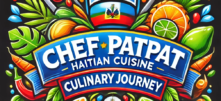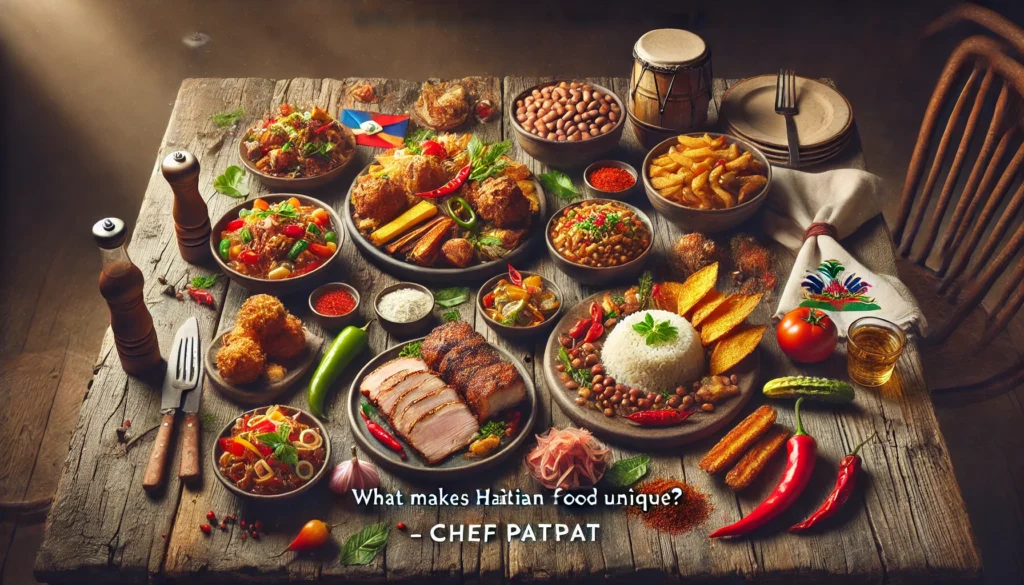Haitian Cuisine: A Unique Blend of Flavors
Haitian cuisine is a vibrant and flavorful reflection of the country’s rich history and cultural diversity. With its unique blend of African, French, and Caribbean influences, Haitian food offers a tantalizing culinary experience that is both comforting and exotic.
What Makes Haitian Food Unique?
Several factors contribute to the unique character of Haitian cuisine:
- Bold Flavors: Haitian dishes are known for their bold and vibrant flavors, often achieved through the use of a variety of spices, herbs, and chiles.
- Fresh Ingredients: Haitian cuisine emphasizes the use of fresh, locally sourced ingredients, including tropical fruits, vegetables, and seafood.
- Rice and Beans: Rice and beans are staples of Haitian cuisine, often served as a side dish or as the base for other dishes.
- Unique Sauces and Condiments: Haitian cuisine features a variety of unique sauces and condiments, such as pikliz, a spicy pickled vegetable relish.
Popular Haitian Dishes
Here are some of the most popular Haitian dishes, often highlighted by renowned Chef Pat:
- Griot: This popular dish consists of marinated and fried pork shoulder. The pork is often marinated in a mixture of lime juice, garlic, and spices, then fried until crispy. Griot is typically served with rice and beans, pikliz, and avocado.
- Tasso: Tasso is a spicy smoked beef that is often used in a variety of dishes. It can be served as a standalone dish, or used to add flavor to soups, stews, and other meals.
- Accra: Accra are deep-fried fritters made from salted codfish, cassava, and spices. They are often served as an appetizer or snack, and can be enjoyed with a variety of dipping sauces.
- Soup Joumou: This pumpkin soup is a national dish of Haiti, often eaten on Independence Day. It is made with pumpkin, beef, vegetables, and spices, and is typically served with bread.
- Legim: Legim is a hearty vegetable stew made with a variety of vegetables, such as eggplant, cabbage, carrots, and spinach. It is often served with rice or bread.
- Krémas: Krémas is a creamy cornmeal porridge that is often flavored with cinnamon and nutmeg. It is a popular breakfast dish in Haiti, and can also be enjoyed as a dessert.
- Pikliz: Pikliz is a spicy pickled vegetable relish that is made with a variety of vegetables, such as carrots, cabbage, and green papaya. It is a popular condiment in Haitian cuisine, and can be used to add flavor to a variety of dishes.
The Influence of Chef Patpat
Chef Patpat, a renowned Haitian chef, has played a significant role in elevating Haitian cuisine to new heights. He has introduced innovative dishes that blend traditional Haitian flavors with modern techniques, while also highlighting the importance of preserving Haitian culinary heritage. Chef Pat’s restaurants have become popular destinations for both locals and tourists, offering a unique and unforgettable dining experience.
The Future of Haitian Cuisine
Haitian cuisine is a vibrant and flavorful tradition that is well worth exploring. With its unique blend of African, French, and Caribbean influences, Haitian food offers a truly unique culinary experience. Whether you’re a seasoned foodie or simply looking to try something new, Haitian cuisine is sure to satisfy your taste buds.
As Haitian cuisine continues to gain global recognition, chefs like Pat are working to preserve traditional recipes while innovating and elevating Haitian cuisine to new heights. By embracing the rich heritage of Haitian cuisine, we can continue to share its unique flavors with the world.
Haitians and Their Cuisine: A Deep-Rooted Connection
Haitians have a profound connection to their cuisine, which is deeply rooted in their history, culture, and traditions. Food is not merely sustenance for Haitians; it’s a source of comfort, joy, and community.
The Role of Cuisine in Haitian Culture
- Family Gatherings: Haitian cuisine often brings families and communities together. Shared meals are a common way to celebrate special occasions, such as birthdays, weddings, and holidays.
- Cultural Identity: Haitian food is an integral part of the country’s cultural identity. It reflects the nation’s history, including its African, French, and indigenous roots.
- Spiritual Significance: Food plays a significant role in Haitian spiritual beliefs. Certain dishes are prepared for specific rituals and ceremonies, such as offerings to ancestors or deities.
Chef Patpat’s Perspective on Haitian Cuisine
Chef Patpat, a renowned Haitian chef, has dedicated his career to promoting Haitian cuisine and showcasing its unique flavors. He often emphasizes the importance of preserving traditional recipes while also incorporating modern techniques and ingredients. Chef Pat’s passion for Haitian food is evident in his innovative dishes, which often blend the old and the new.
The Global Influence of Haitian Cuisine
Haitian cuisine has been gaining global recognition in recent years, thanks to the efforts of chefs like Pat and the growing interest in Caribbean food. Haitian restaurants are popping up in major cities around the world, offering authentic flavors and cultural experiences.
The Future of Haitian Cuisine
The future of Haitian cuisine looks bright. As younger generations embrace their culinary heritage, they are bringing new ideas and perspectives to the table. By blending traditional recipes with modern techniques, these chefs are helping to ensure that Haitian cuisine continues to evolve and thrive.
In Conclusion
Haitian cuisine is a vibrant and flavorful reflection of the country’s rich history and culture. By understanding the deep-rooted connection between Haitians and their food, we can appreciate the unique qualities that make Haitian cuisine so special. As Haitian cuisine continues to gain global recognition, it’s important to support the chefs and artisans who are working to preserve this important cultural heritage.

